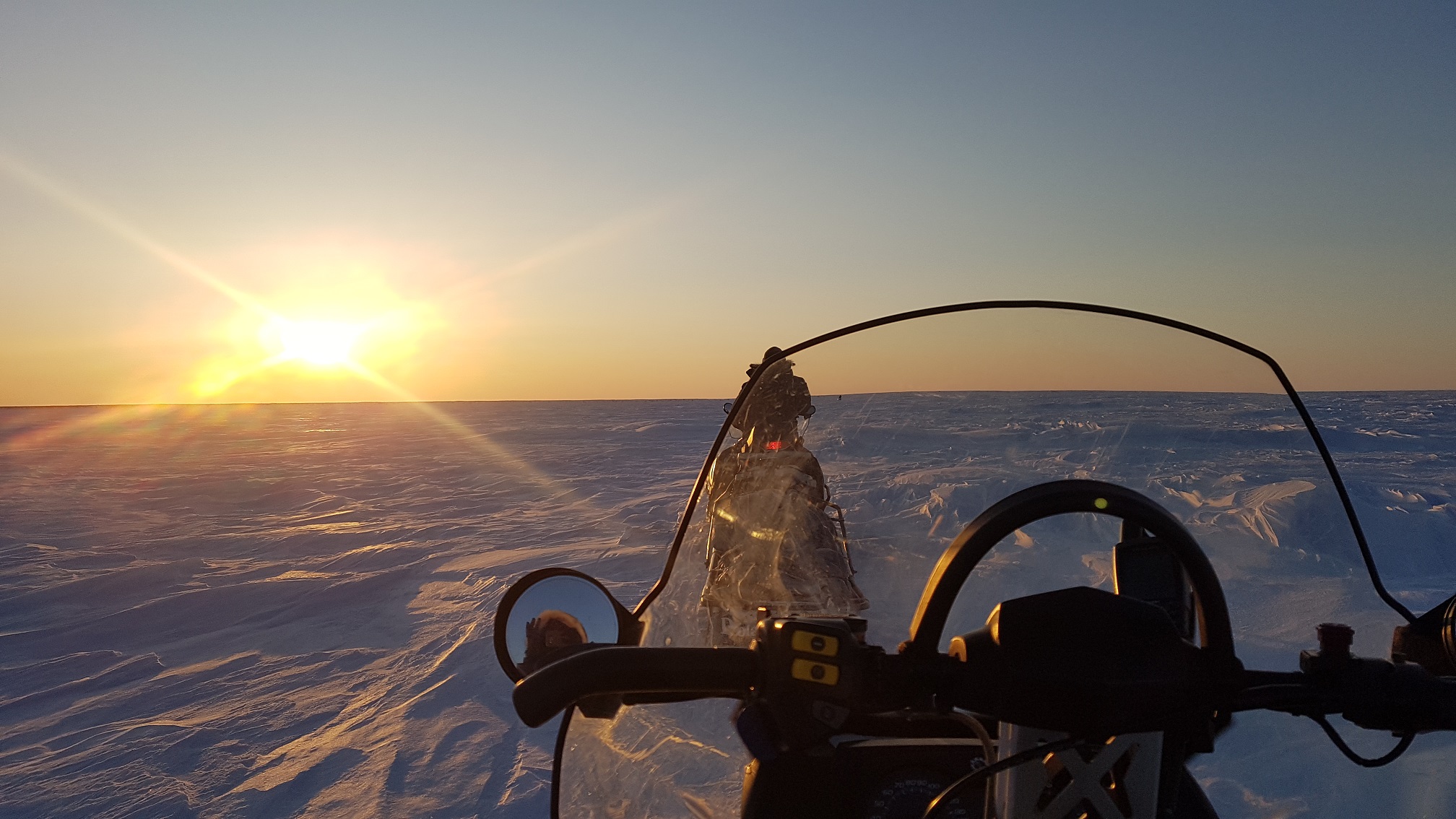This year brought many new staff to Churchill Northern Studies Centre. We asked each of them for their personal take on their first winter in Churchill. Please enjoy seeing a subarctic winter through the eyes of these subarctic rookies.

Erica Gillis, Research Intern
It was the thought of spending a winter in the subarctic that originally drew me to Churchill. I was intrigued by the challenge, but also nervous to see how my body (and mind) would react to the coldest temperatures I had ever felt. Little did I know it would end up being my favourite season. After a spring, summer, and fall of ever-changing landscapes and transient species, now the tundra stood still, frozen in time. When the expansive Hudson Bay Lowlands are frozen, travelling across the land becomes much easier. I was able to see and experience areas that are simply inaccessible in other seasons. I will never forget my first 140km snowmobile ride across the bumpy tundra (the equivalent of riding a mechanical bull for 8 hours). My body was sore, but my heart was full; because after these long, frigid days we were always rewarded by a warm cabin, stunning views, and good company.
Ben Verzijlenberg, Seasonal Research Technician
The first thing I noticed was the snow. It felt and sounded different than the snow in Ontario I was used to. That snow was fluffy, or hard from a thaw/freeze layer. This was like walking on styrofoam. Not something you want to jump into, and fairly consistently hard. By the time we got to March it was the watery equivalent of concrete. But the cold here made a lot of things different.
Ice was another one. Travelling over frozen ponds (our winter “highways”) became everyday, and the wind would expose patches of ice, clearer and thicker than anything I could remember. I’d been told back home by an elderly gentleman that the lake ice in Ontario used to freeze thick and clear, but the climate was different now. Coming to Churchill I could see what he had meant, looking well over a foot into the ice before it turned white in a clear boundary. A meter and a half thick in places. But I’m getting off track; those cleared patches of ice were calling, a perfect place to slide. Except they weren’t, because ice isn’t slippery (hardly anyway) at -50 degrees Celsius. Experiencing non-slippery ice is strange when you’ve spent your life practicing a penguin walk to avoid landing on your butt.
The cold here has been what I would describe as “next level”. Dressing and undressing occupied a decent portion of the time, and layering head coverings. But as cold as the days were, coming back in the evenings to friends, food (thanks Kate!), and often an aurora show have made this an incredible first winter in the subarctic.
 Photo: Alan Dyer, AmazingSky
Photo: Alan Dyer, AmazingSky
Danielle Chiasson, Seasonal Research Technician
I fell in love with Churchill for its beautiful and foreign landscape and for the warmth and acceptance of its people. I loved watching the wildflowers grow in summer and the landscape turn scarlet and gold during its brief autumn. I didn’t know what to expect for a long upcoming winter. But I was ready to jump in blind because I had great advice and guidance from those around me. I’m not going to lie – the start of winter was really difficult for me. The endless sunshine during summer is something I love and something I thrive in, but endless cold and darkness is something else entirely. If you don’t prepare yourself for a lack of vitamin D, proper exercise, and the slow moving pace of December and January, it is quite easy to fall into a depression.
My first winter in Churchill was a defining moment in my life. It was a challenge to overcome the darkness and bitter cold. And even more of a challenge to not project or become a reflection of those feelings. But there is beauty and magic in Churchill. As soon as the Aurora arrived and the tourists along with them, I felt the light return. The days became longer, the skies were clear, and there was so much new landscape to explore.
Winter in Churchill is a whole other world. A world full of snowmachine rides through an ocean of snow. Dozens of snow shelters in a little snow village. A world of snow science with snow crystals that shine and transform. Warm bonfires with hot chocolate and smores. Sea ice that forms ridges towering in the distance. Parkas, mukluks, and beaver mitts to keep warm. But the best part of it all was being able to share this experience with so many others, who just like me, were experiencing this world for the first time. I’m also so grateful for all the new learning and life experience I gained this winter. When you get to do what you love with people you care about, you never feel cold.

Eric Pearson, Field Station Coordinator
For those that have never experienced -50 degrees Celsius it seems like a super daunting thing and I was definitely in that category before spending my first full winter in Churchill. However, in looking back on the winter I actually started to enjoy the cold days and going outside and being active. The sunshine that came with the very cold weather also helped tremendously. Now that it is spring in Churchill and the snow is starting to melt and signs of summer are starting to appear I feel as though my perspective on winter has changed drastically from something that I need to overcome to more of something that has a tremendous amount of benefits and something that I can look forward to and enjoy. As Ben had mentioned it definitely can have its challenges and some time consuming wardrobe changes but in being prepared (and warm) for what the deep winter is going to throw at you can truly make it a fun and enjoyable time.
Brittany Weber, Sustainability Intern
Living in Churchill during some of the most extreme weather has certainly been an experience unlike any other. I will never forget the first time I built a snow shelter, went on a dog sled tour, walked on the frozen Hudson Bay, or un-froze my hand stuck to a brass doorknob (ALWAYS WEAR GLOVES).
Coming from a predominantly hot desert climate down in the South Okanagan, I was fearful as I have never experienced less than -20-degree Celsius weather. However as long as you prepare for the weather conditions and ask experienced individuals for their expertise you will be able to enjoy the unique experiences the North has to offer.

